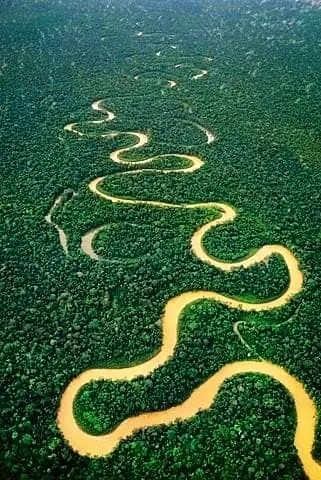"The Historical Journey of Kapuas River in West Kalimantan, Borneo"
The Kapuas River is the longest river in Indonesia with a length of 1,143 km and flows in West Kalimantan.
The Kapuas River plays an important role as a transportation route for the communities around the river.
Apart from that, this river also has a very long history and is rich in stories.
The Kapuas River has various types of natural resources such as wood, gold, coal and others.
This makes this river a destination for many businessmen and investors in the mining and plantation sectors.
However, the long history of the Kapuas River is not only about natural resources, but also about the culture and civilization that lived around it.
According to the beliefs of the Dayak people who live around the Kapuas River, this river has a spiritual power that can bring luck and success to those who preserve it.
For this reason, they always keep the river clean and do not carry out any activity that could damage the river ecosystem.
The early history of the Kapuas River began in prehistoric times when the Kapuas River was still covered in forest and was the traditional settlement of the Dayak people.
In ancient times, the Dayak tribe worked as farmers and fishermen.
Furthermore, in the 19th century, several Chinese businessmen came to the West Kalimantan region to expand in commodity trading.
Several important commercial sectors being developed include rice and fish trade, gold, timber and ivory mining, as well as trade activities between the Dayak and Chinese tribes.
In 1822, the VOC granted the Kapuas Kayan Expedition Company the right to develop the historic area around the Kapuas River.
As a result, many Chinese entrepreneurs emerged and business activities became more intensive.
Considering the rapid trade around the Kapuas River and the development of gold mining at that time, the Dutch, as colonial rulers, built a water transportation route connecting the Kapuas River to China via Sarawak.
During colonialism, the Dutch controlled the Kapuas exploration company.
They carry out scientific and geological research to exploit the natural potential of the West Kalimantan region.
Since then, the Kapuas River has become an important transportation route for the Dutch to transport agricultural products from West Kalimantan.
Apart from that, the Dutch built a sugar factory around the Kapuas River and focused on developing plantations to utilize the resources available around the river.
At independence, the Indonesian government took over the Kapuas River transportation route.
The Indonesian government has built a road network connecting several towns around the Kapuas River.
This makes transportation easier and more efficient for the communities around the river.
Apart from that, the Indonesian government remains committed to maintaining the sustainability of the Kapuas River by assessing the environmental and social damages around the river from time to time.
Until now, the Kapuas River remains a very important resource for West Kalimantan. The Kapuas River has become the center of transportation, commerce and tourism in West Kalimantan.
Various types of supporting activities and businesses, such as factories, plantations and trade, are increasingly emerging along the Kapuas River.
The Kapuas River has become part of the life and history of the people of West Kalimantan, which has a long and rich history. And it remains a bustling center today.
In its long history, the Kapuas River not only tells the story of the use of natural resources. However, it also talks about the civilization and culture of the Dayak people and the role of this river as an important center of trade and transportation for the people of West Kalimantan.
Hopefully, by understanding the long history of the Kapuas River, we can better appreciate this river as an important heritage for the people of West Kalimantan.






Comments